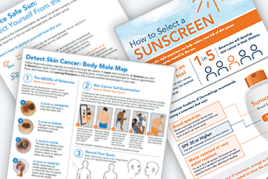Bullous pemphigoid: Causes
What causes bullous pemphigoid?
Bullous pemphigoid is an autoimmune disease. This type of disease develops when your immune system malfunctions, causing your body to attack a part of itself.
When you have bullous pemphigoid, your body attacks fibers that connect the top layer of skin (epidermis) to the deeper layer (dermis).
This attack produces inflammation, which is what causes the skin to itch and the blisters to develop. Why the body starts attacking these fibers isn’t entirely clear.
Who has a higher risk of developing bullous pemphigoid?
Scientists have learned that some people have a higher risk of developing bullous pemphigoid.
Your risk increases if you:
Are over 60 years of age
Had a stroke
Have dementia, epilepsy, multiple sclerosis, or Parkinson’s disease
It’s unlikely that your sex or race increase your risk. Bullous pemphigoid occurs equally in men and women. This disease also occurs in people of all races.
Bullous pemphigus usually develops after 60 years of age
Most people are in their 70s when they get this disease.

Bullous pemphigoid may have triggers
A trigger is something that either:
Brings about a disease in someone whose genetic makeup increases the likelihood of developing that disease
Causes symptoms in a person who already has a disease
There have been reports that the following can trigger bullous pemphigoid:
Certain prescription medications: While some medications have been reported to trigger this disease, it’s important to keep in mind that bullous pemphigoid is a rare disease. Many people who take one of the following medications never get bullous pemphigoid:
Pembrolizumab, nivolumab: Given to treat melanoma and other cancers that have spread
Saxagliptin, sitagliptin, vildagliptin: Diabetes medications
Penicillin: An antibiotic
Sulfasalazine: An anti-inflammatory
Etanercept: A biologic
Penicillamine: Given to treat Wilson’s disease or severe rheumatoid arthritis
Medical treatments: A few people have developed bullous pemphigoid after undergoing:
Radiation therapy to treat cancer
Ultraviolet light therapy
Surgery: There have also been reports of people developing bullous pemphigoid after having a:
Colostomy
Urostomy
Skin graft
If a medical treatment has caused blisters, see a board-certified dermatologist. Treating bullous pemphigoid can prevent (or reduce) the new blisters that appear, reducing your risk of developing a serious infection.
To find out how dermatologists diagnose and treat this rare disease, go to: Bullous pemphigoid: Treatment.
Image
Getty Images
References
Bernard P, Borradori L. “Pemphigoid group.” In: Bolognia JL, et al. Dermatology. (fourth edition). Mosby Elsevier, China, 2018: 510-9.
Culton DA, Zhi L, Diaz LA. “Bullous pemphigoid.” In: Kang S, et al. Fitzpatrick’s Dermatology. (ninth edition) McGraw Hill Education, United States of America, 2019:944-55.
Heymann WR, “Untangling the neurologic comorbidities of bullous pemphigoid.” Dermatol World Insights & Inquiries. Last updated June 6, 2017. Last accessed July 9, 2021.
Tull TJ, Benton E. “Immunobullous disease.” Clin Med (Lond). 2021;21(3):162-5.
Written by:
Paula Ludmann, MS
Reviewed by:
Arturo R. Dominguez MD, FAAD
Ivy Lee, MD, FAAD
Shari Lipner, MD, PhD, FAAD
Last updated: 9/21/21
 Atopic dermatitis: More FDA-approved treatments
Atopic dermatitis: More FDA-approved treatments
 Biosimilars: 14 FAQs
Biosimilars: 14 FAQs
 How to trim your nails
How to trim your nails
 Relieve uncontrollably itchy skin
Relieve uncontrollably itchy skin
 Fade dark spots
Fade dark spots
 Untreatable razor bumps or acne?
Untreatable razor bumps or acne?
 Tattoo removal
Tattoo removal
 Scar treatment
Scar treatment
 Free materials to help raise skin cancer awareness
Free materials to help raise skin cancer awareness
 Dermatologist-approved lesson plans, activities you can use
Dermatologist-approved lesson plans, activities you can use
 Find a Dermatologist
Find a Dermatologist
 What is a dermatologist?
What is a dermatologist?